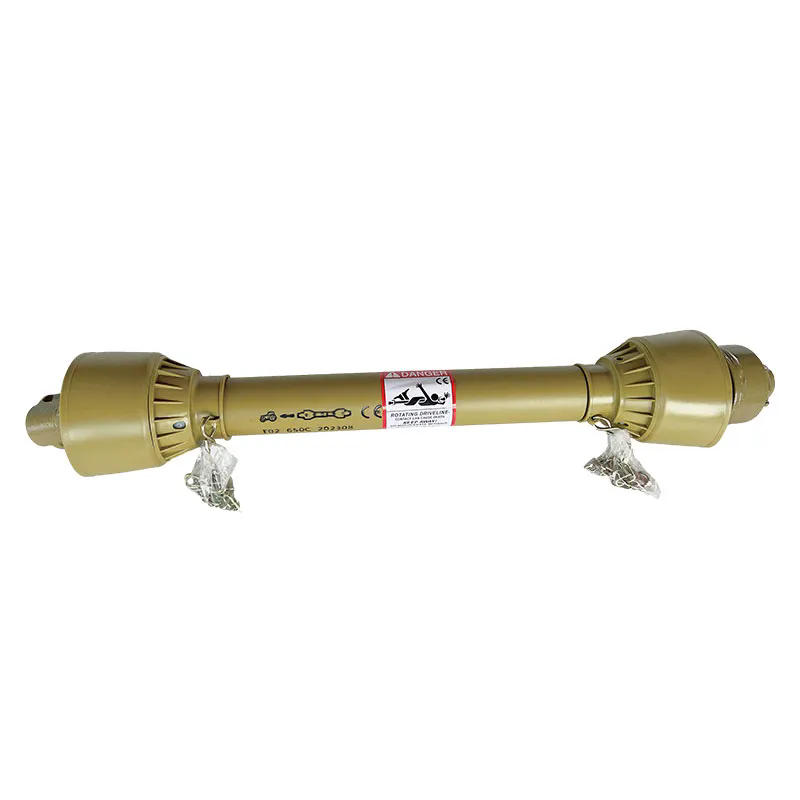What Role Does the Power Train Axle Play in Vehicle Performance?
2024-11-22
When it comes to vehicle performance and efficiency, every component has a crucial role. One such key part is the power train axle, a vital piece of the vehicle’s drivetrain. But what exactly does the power train axle do, and how does it impact the overall performance of your vehicle? Let’s dive into its purpose, function, and why it is so important for smooth and efficient driving.
What Is a Power Train Axle?
The power train axle is a critical component in a vehicle’s drivetrain system. It connects the power generated by the engine to the wheels, allowing the vehicle to move. Essentially, it transmits the engine’s power to the wheels by turning the rotational energy from the engine into motion.
The power train axle is part of the broader powertrain system, which includes the engine, transmission, driveshaft, and differential. Each of these components works together to ensure the vehicle moves smoothly and efficiently.
How Does the Power Train Axle Work?
In simple terms, the axle plays a role in transferring power from the engine to the wheels of the vehicle. Here’s a breakdown of its operation:
- Engine Power: The engine generates power, which is sent through the transmission system to the driveshaft.
- Torque Transfer: The driveshaft transmits the torque (rotational force) to the axle.
- Wheel Movement: The axle converts the rotational energy into movement by turning the wheels. This is what propels the vehicle forward or backward.
In a front-wheel-drive vehicle, the power train axle is connected to the front wheels. In a rear-wheel-drive vehicle, the axle is connected to the rear wheels. Some vehicles, such as all-wheel-drive or four-wheel-drive vehicles, have power train axles connected to both the front and rear wheels.
Why Is the Power Train Axle Important?
The power train axle has several key functions that are vital to vehicle performance. Let’s explore why it is so important:
1. Transmitting Power Efficiently
The primary function of the power train axle is to transmit the engine's power to the wheels. A well-designed axle ensures that power is transferred smoothly and efficiently, resulting in better performance and fuel economy. If the axle fails to do this properly, the vehicle may struggle with acceleration, experience poor fuel efficiency, or even fail to move altogether.
2. Handling Torque
The axle is responsible for handling the torque produced by the engine. Depending on the vehicle’s power and weight, the axle must be able to handle varying levels of torque. A robust axle ensures that the vehicle can manage high torque during acceleration, while also offering stability during braking and cornering.
3. Impact on Vehicle Stability and Handling
A properly functioning axle is key to maintaining vehicle stability. When the axle is in good condition, it ensures that the wheels remain aligned and move as they should. Any issues with the axle, such as wear or misalignment, can affect the handling of the vehicle, causing vibrations or uneven tire wear. This is why regular maintenance of the power train axle is critical for optimal vehicle performance.
4. Durability and Longevity
The power train axle is under constant stress as it transmits power from the engine to the wheels. Over time, the axle may experience wear and tear, especially if the vehicle is used for heavy-duty tasks or off-road driving. However, a high-quality axle can last for many years, contributing to the vehicle’s overall durability and longevity. Regular inspections and maintenance can further extend the lifespan of the axle.
Types of Power Train Axles
There are several types of power train axles, each designed for different types of vehicles. The most common types include:
1. Live Axle
A live axle is a type of axle that not only supports the weight of the vehicle but also transmits power to the wheels. It is often used in rear-wheel-drive vehicles and can be found in many trucks and off-road vehicles.
2. Dead Axle
A dead axle is an axle that only supports the weight of the vehicle, but does not transmit power to the wheels. This type of axle is commonly used in the front of rear-wheel-drive vehicles or in the rear of front-wheel-drive vehicles.
3. Independent Rear Axle (IRS)
An Independent Rear Axle (IRS) system allows each rear wheel to move independently of the other. This improves ride comfort and handling, particularly in sports cars or luxury vehicles, where better suspension and handling are critical.
4. Solid Axle
A solid axle is a single, rigid axle that connects both wheels on the same side of the vehicle. It’s a more traditional design, typically used in trucks and off-road vehicles where durability and strength are essential.
Common Issues with Power Train Axles
While power train axles are designed to be durable, they can experience issues over time. Some common problems include:
- Axle Shaft Damage: The axle shaft can become damaged due to wear and tear, impacting the vehicle’s ability to transmit power effectively.
- Differential Failure: The differential, part of the axle system, may fail, causing issues with power distribution to the wheels.
- Worn Bearings: The bearings inside the axle can wear out, leading to noise, vibration, or difficulty in turning.
How to Maintain Your Power Train Axle
Proper maintenance is key to ensuring the longevity and performance of your vehicle’s power train axle. Regular checks for wear and tear, as well as addressing any issues immediately, can help keep your axle functioning properly. Additionally, ensuring that the axle is well-lubricated and properly aligned can prevent damage and improve overall vehicle performance.
Conclusion
The power train axle plays an indispensable role in vehicle performance, from transmitting engine power to supporting the vehicle’s stability and handling. Whether your vehicle is a sedan, truck, or off-road vehicle, the axle is a crucial part of the drivetrain system. Understanding its role can help you maintain your vehicle more effectively, ensuring it runs smoothly for years to come.



